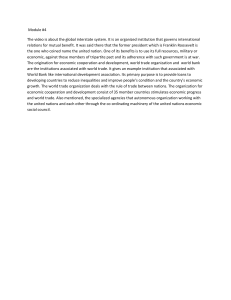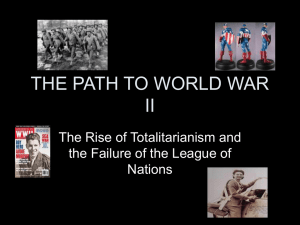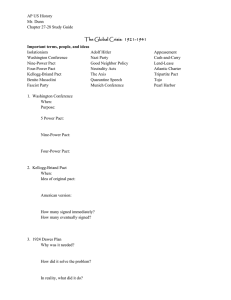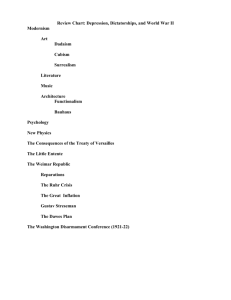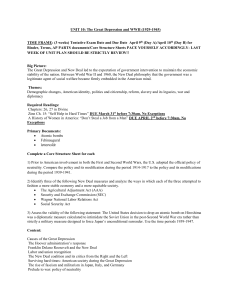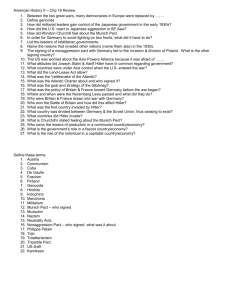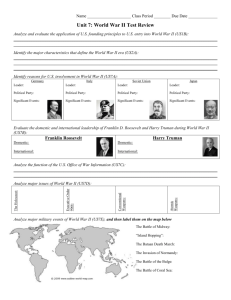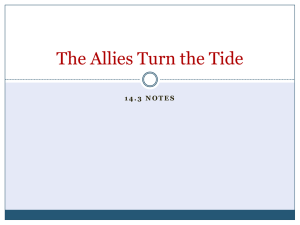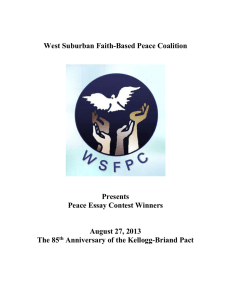39 Chapters Twenty-Nine and Thirty Review Sheet
advertisement
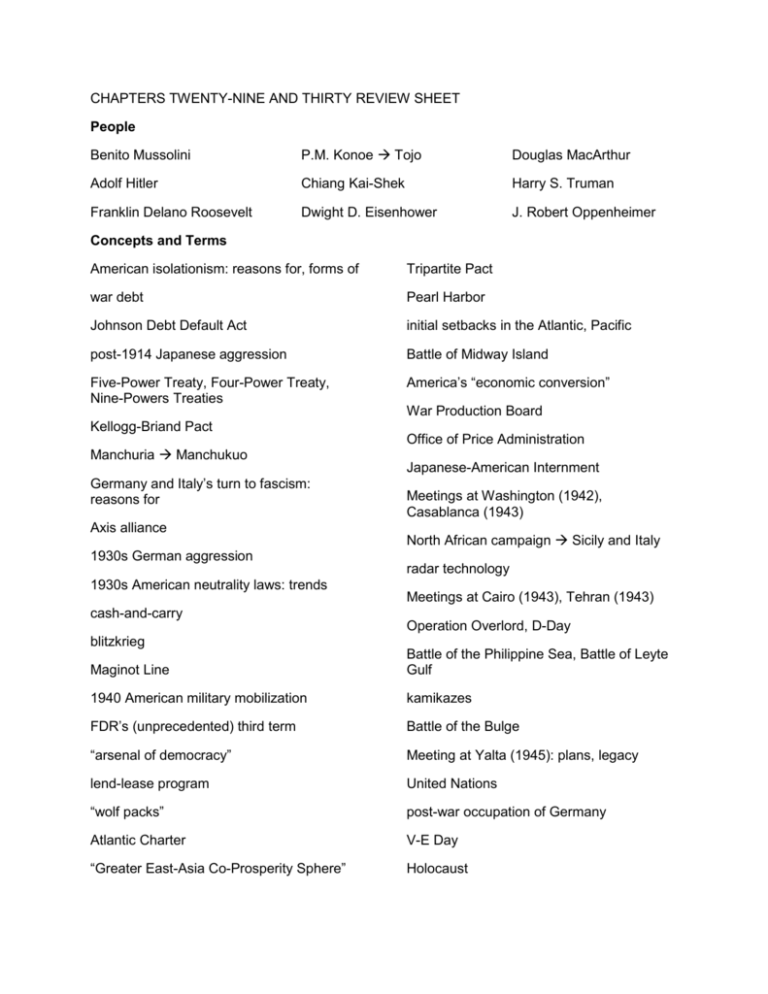
CHAPTERS TWENTY-NINE AND THIRTY REVIEW SHEET People Benito Mussolini P.M. Konoe Tojo Douglas MacArthur Adolf Hitler Chiang Kai-Shek Harry S. Truman Franklin Delano Roosevelt Dwight D. Eisenhower J. Robert Oppenheimer Concepts and Terms American isolationism: reasons for, forms of Tripartite Pact war debt Pearl Harbor Johnson Debt Default Act initial setbacks in the Atlantic, Pacific post-1914 Japanese aggression Battle of Midway Island Five-Power Treaty, Four-Power Treaty, Nine-Powers Treaties America’s “economic conversion” Kellogg-Briand Pact Manchuria Manchukuo Germany and Italy’s turn to fascism: reasons for Axis alliance 1930s German aggression 1930s American neutrality laws: trends cash-and-carry blitzkrieg War Production Board Office of Price Administration Japanese-American Internment Meetings at Washington (1942), Casablanca (1943) North African campaign Sicily and Italy radar technology Meetings at Cairo (1943), Tehran (1943) Operation Overlord, D-Day Maginot Line Battle of the Philippine Sea, Battle of Leyte Gulf 1940 American military mobilization kamikazes FDR’s (unprecedented) third term Battle of the Bulge “arsenal of democracy” Meeting at Yalta (1945): plans, legacy lend-lease program United Nations “wolf packs” post-war occupation of Germany Atlantic Charter V-E Day “Greater East-Asia Co-Prosperity Sphere” Holocaust War Refugees Board Potsdam Declaration Manhattan Project Hiroshima, Nagasaki atomic bomb war’s effects on social and political trends in U.S. Timeline 1928 – Kellogg-Briand Pact 1939 – Germany invades Poland 1942 – FDR creates War Productions Board; Roosevelt signs Executive Order 9066 1940 – Roosevelt elected to a third term; Tripartite pact 1944 – D-Day invasion 1941 – Pearl Harbor 1945 – Yalta conference; Germany and Japan surrender Free Response 1. Why does the United States pursue a policy of isolationism after World War I? What forms does this take? 2. What acts of aggression propel the world toward war in the 1930s? 3. What war preparations does the United States make prior to its official entrance? Why, and how, does the United States aid the Allies prior to its official entrance? 4. Discuss the economic and social shifts that take place in the United States while it is at war. 5. Trace the meetings of the Allied leaders between 1942-1945: (a) How do they diverge on military strategy? What courses do they pursue, and in what order? (b) What arrangements do they make to shape the postwar world? 6. Discuss the legacy of World War II: (a) What technological advancements influence the military progress and outcome of the war? (b) What are the war’s effects on economic and political trends in the U.S.?
